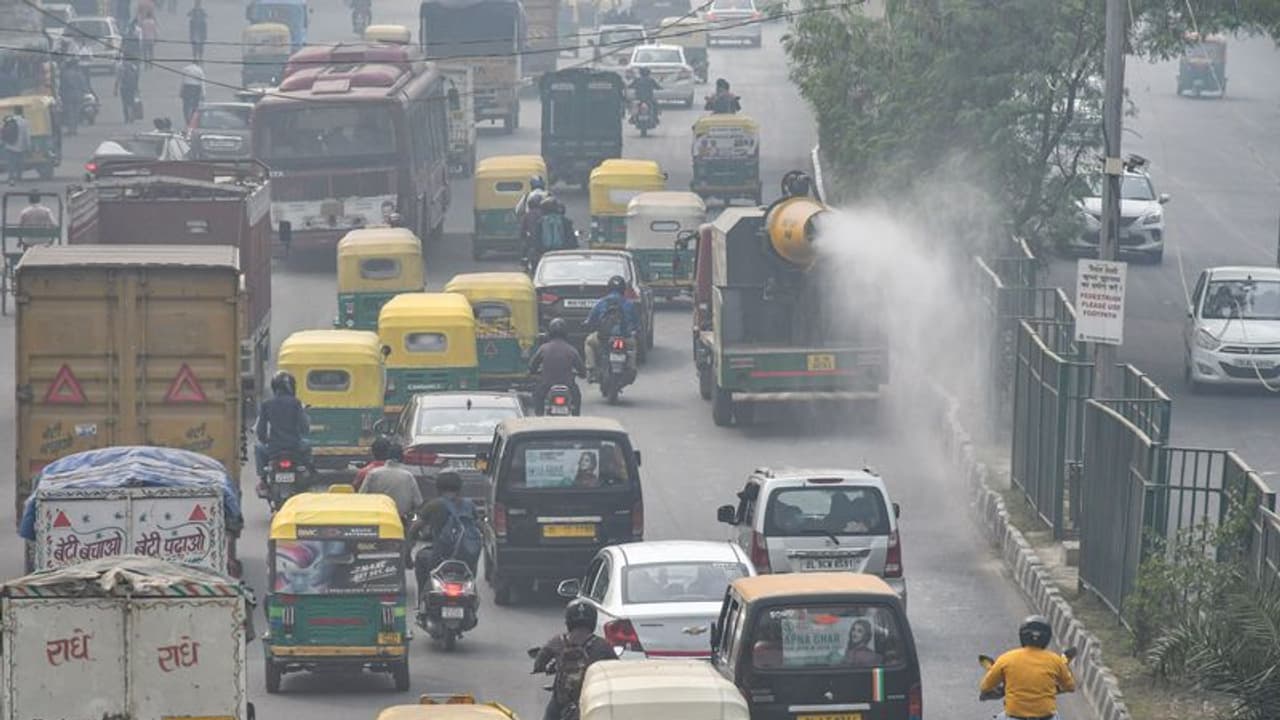Since 40% of Delhi’s pollution comes from vehicles, the Commission for Air Quality Management in NCR and Adjoining Areas (CAQM) has already issued an advisory. Grade 2 of the Graded Response Action Plan (GRAP) has already been enforced in the national capital, anticipating a drop in the air quality during the festive period.
As the temperature decreases, the National Capital Region's (NCR) air quality has started to decline. The Air Quality Index (AQI) was 263 (bad) on Monday, but with Tuesday night's activities, it is probably going to cross the 300 (very poor) threshold.

The Indian Institute of Tropical Meteorology (IITM), Pune, has released an air quality forecast that states that for the next three days, the AQI is expected to remain above "poor" to "very poor" levels, with a notable decline on Wednesday morning. Over the course of the week, little precipitation is anticipated, and morning mist is forecast to cover clear sky.
Delhi's evening temperatures have dropped to 17°C, and the winds are mostly from northwest India, where the incidents of stubble burning have increased once again. The wind speed is still moderate, ranging from 6 to 10 kmph, and is usually calm during the night. Wind speeds below 10 kmph typically cause the pollutants to stagnate, which raises the pollution levels.
Millions of people in the National Capital Region (NCR) are at risk for respiratory illnesses, which can take many forms. The air pollution is a year-round problem for millions of people in the NCR, and even during the winter months, when a thick layer of toxic smog covers the entire region.
The Commission for Air Quality Management in NCR and Adjoining Areas (CAQM) has already issued an advisory, stating that as of November 1, all buses—private or government—that originate from the NCR areas in neighbouring states and travel to Delhi must be either electric vehicles (EVs), CNG, or BS-VI diesel.
Uttar Pradesh, Rajasthan, and Haryana have also developed action plans to replace or relocate their older, diesel-operated BS-III and BS-IV buses gradually and acquire the BS-VI buses. Of these, Haryana intends to acquire about 1,313 new BS VI buses, Rajasthan plans for 590 new ones, and UP has set a target of more than 1,650 new diesel buses by March 2024.
In anticipation of a decline in air quality throughout the holiday season, Grade 2 of the Graded Response Action Plan (GRAP) has already been implemented in the nation's capital. Three days before the AQI is expected to reach that stage's anticipated levels, GRAP is put into effect.
When the AQI falls into the poor category (AQI 201-300), Stage 1 of the Graded Response Action Plan (GRAP) begins, and Grade 2 begins when the AQI reaches 300-400. Grade 4 is used when the AQI crosses the 450 threshold and becomes "severe +." Grade 3 is applied when the AQI exceeds the 400 level.
According to GRAP 3, all state government schools in Delhi are urged to decide whether to stop offering physical instruction for students in classes up to class 5 if the AQI exceeds the 400 threshold (severe). If the air quality deteriorates, the state governments would also have to enforce severe limitations on the operation of four-wheelers with BS-III petrol and BS-IV diesel in Delhi, Gurugram, Noida, Faridabad, and Ghaziabad.
